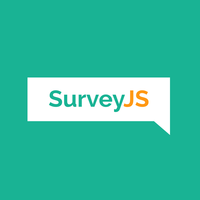SaaSHub helps you find the best software and product alternatives Learn more →
Yalc Alternatives
Similar projects and alternatives to yalc
-
SurveyJS
Open-Source JSON Form Builder to Create Dynamic Forms Right in Your App. With SurveyJS form UI libraries, you can build and style forms in a fully-integrated drag & drop form builder, render them in your JS app, and store form submission data in any backend, inc. PHP, ASP.NET Core, and Node.js.

-
synergy-core
Open source core of Synergy, the cross-platform keyboard and mouse sharing tool (Windows, macOS, Linux)
-
InfluxDB
Power Real-Time Data Analytics at Scale. Get real-time insights from all types of time series data with InfluxDB. Ingest, query, and analyze billions of data points in real-time with unbounded cardinality.

-
turbo
Incremental bundler and build system optimized for JavaScript and TypeScript, written in Rust – including Turbopack and Turborepo.
-
SaaSHub
SaaSHub - Software Alternatives and Reviews. SaaSHub helps you find the best software and product alternatives

yalc reviews and mentions
-
Useful Javascript Monorepo Tools To Consider While Managing Multiple projects
Yalc
-
What are the not-so-obvious tools that you don't want to miss?
Yalc - Makes it easy to mock-publish NPM packages and try them in real projects before you publish a new version to NPM.
-
Share private NPM packages across projects
As well as yarn/npm link mentioned in another comment, https://github.com/wclr/yalc can help with some of this, depending on your workflow/how much you're doing this.
-
How do you debug a library written in Typescript in a React app using it?
Ah okay, that's much easier. Clone the project repo, make your changes and build the library, then in the react app, either add the local project directory as a dependency, or use something like yalc to add the locally built dependency. This will allow you to use the local copy of the library instead.
-
We Halved Go Monorepo CI Build Time
Lets look at a concrete example and then maybe we can discuss alternatives.
In this particular case, I would respond with the following:
1. I don't see why this is a problem. Have an "open PRs" link in the onboarding handbook that gives you a view of pull requests from all repos in the organization. GitHub automatically shows you notifications from all repos.
- Have a (Grafana) dashboard where you can see the latest / newest stuff. Use standard GH tools you use for OSS, such as follows etc to keep up.
2. Don't prematurely split into multiple libraries. "No monorepo" doesn't mean not having poly-package repos. It means thinking what the sensible API boundary is - treating your projects as you would treat library development. In this case a separate repo with lib3, lib2 and lib1 sounds like a good way to go - at most one repo per orthogonal internal framework (e.g. core-react-components).
3. Help other teams upgrade. If you are responsible for repo A, once you publish a new version and tag it with semver appropriately, use the dashboard to look at your dependants and work with them (or rather, for them) to upgrade. Think of your dependants as internal customers, and make sure you add enough value for them to justify the upgrade effort.
4. There are other alternatives to `npm link` e.g. see `yalc` https://github.com/wclr/yalc
-
Using local NPM packages as dependencies with yalc
yalc makes it easy to use locally-developed packages in other projects. It has some other useful options that I didn't mention here; read more about them on the project's README. Hopefully, this helps you get started developing with local packages––good luck!
-
Where do I store components I need to use in multiple React apps that are being built simultaneously?
You can also use yalc which is like an npm store on your engine.. https://github.com/wclr/yalc
-
A note from our sponsor - SaaSHub
www.saashub.com | 10 May 2024
Stats
wclr/yalc is an open source project licensed under MIT License which is an OSI approved license.
The primary programming language of yalc is TypeScript.

Sponsored